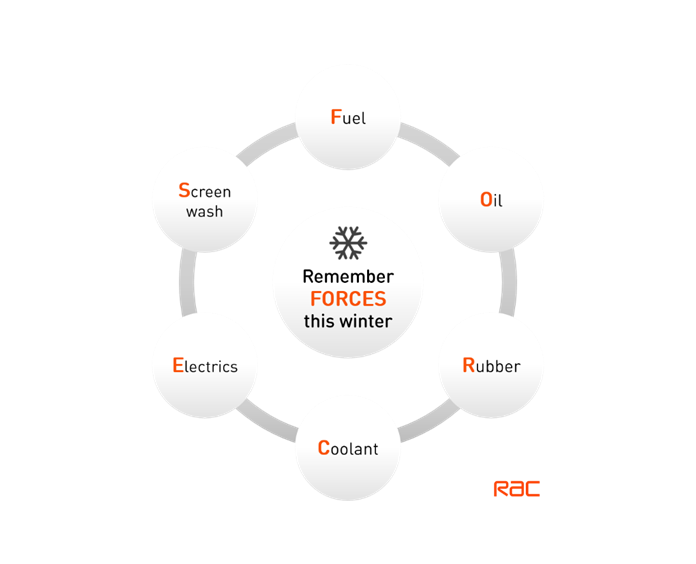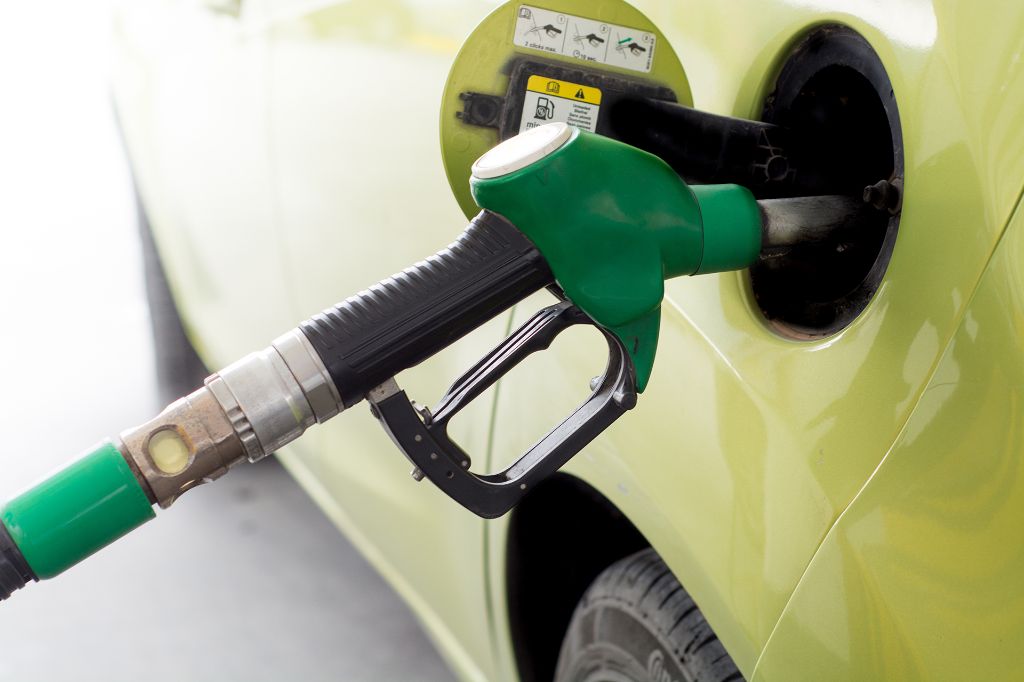6 simple checks to prepare your vehicle for winter
With busy lives, it’s sometimes difficult to find time to make preparations, but checking your car is ready for winter is a really important job to do.
Breakdowns or accidents caused by unsafe tyres will be at minimum an inconvenience, and at worst could be deadly. Make sure you’re one step ahead of cold and snowy winter weather by doing a few simple checks on your vehicle today.
The RAC recommends using the acronym ‘FORCES’ to remember the simple winter checks:

1. F – Fuel
It may sound obvious but ensure you have enough fuel for your journey – it is a good idea to fill-up before setting off. Cars use more fuel in heavy traffic and start/stop conditions which can be regular occurrences, especially in wintry weather. And if the weather changes and it takes longer than you expect you could encounter problems.

2. O – Oil
Check your oil level using the dip stick and top-up if necessary – check your handbook if you are unfamiliar with how to do this and to ensure you use the correct oil. Locate the oil cap with the oil can symbol on it and pour in the right amount. Make sure you replace the cap fully and be careful not to overfill as this can cause more problems.

Locate the oil cap with the oil can symbol on it and pour in the right amount. Make sure you replace the cap fully and be careful not to overfill as this can cause more problems.

3. R– Rubber
Check your tyre tread depth and air pressure
Remember that well-maintained tyres are vital to give you traction and grip on icy, wet surfaces. Your car’s recommended tyre pressure can be found either in your car’s manual or inside the driver’s door.
The legal tyre tread depth for cars in the UK and Europe is 1.6mm. Check your tyre tread depth using either a tyre gauge, the marker bars on your tyre or a 20 pence coin. If you can’t see the outer band of the 20p your tyres are within the legal limit. RAC recommends you check your tyres every fortnight, and before long journeys. The RAC recommends changing your tyres before they get to the low limit and ideally a minimum tread depth of 3mm in icy or very wet conditions.
Check your wiper blades
In winter your windscreen can get a very dirty from rain, snow, ice and road salt. Maintaing good visibility is always imperative so check your wipers are doing the job by spraying some washer fluid and checking they clean the windscreen. Then get out of the car and run your fingers along the length of the the blades to check for splits. It’s recommended to change wiper blades every 12 months.

4. C – Coolant
Coolant (a mixture of water and antifreeze) is pumped around your engine to cool it. You should regularly check your engine coolant level and top-up if required. Remember only check this when the engine is cool otherwise you risk scalding yourself. It’s not normal for coolant levels to drop suddenly, so if it does, get it checked out at a garage. You should find the coolant is between the min/max marks on the side of the tank.

5. E – Electrics
Check your lights and indicators are all working properly and replace bulbs or fuses if required. Battery problems are the reason for more RAC call-outs in winter than anything else. Car batteries need replacing every few years (according to usage) so make sure you get yours checked at your car service. RAC has a guide about checking and maintaining your battery.
6. S – Screen wash
Make sure you top up your screenwash with a product that is effective down to at least -15 degrees Celsius. This additive helps to keep the windscreen free of ice and dirt, particularly the winter road grime caused by road salting and gritting which can cause visibility issues. There is also the risk of a frozen windscreen which is another reason to ensure you use a proper anti-freeze screen wash.

Here's a video of a few winter vehicle tips
Get organised now: prepare a basic winter car kit
Put together a basic winter car kit with a few items to make sure you’re ready when cold weather hits. Your winter car kit should include:
- Ice scraper and de-icer
- Jump leads
- Reflective warning triangle – ideally two
- Sunglasses
- In-car phone charger – and a portable battery charger
- Blanket
These are some easy items to put together as a very minimal basic option, but you should also consider a more substantial kit – find out more about what a full winter car kit should contain





